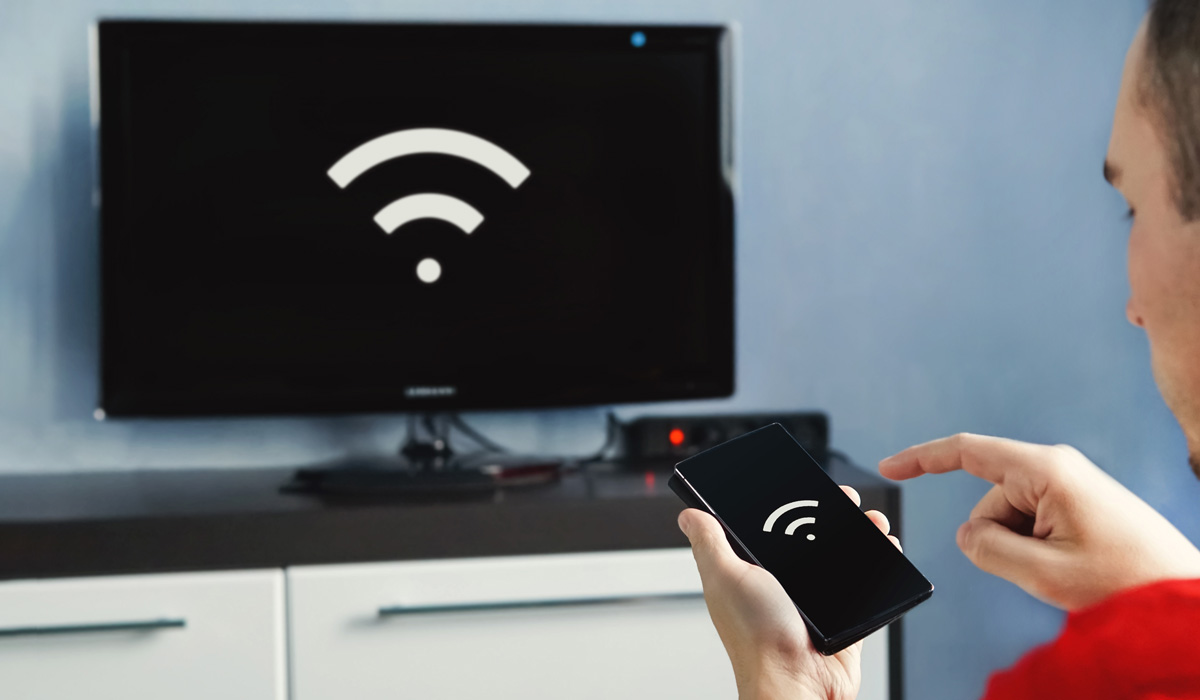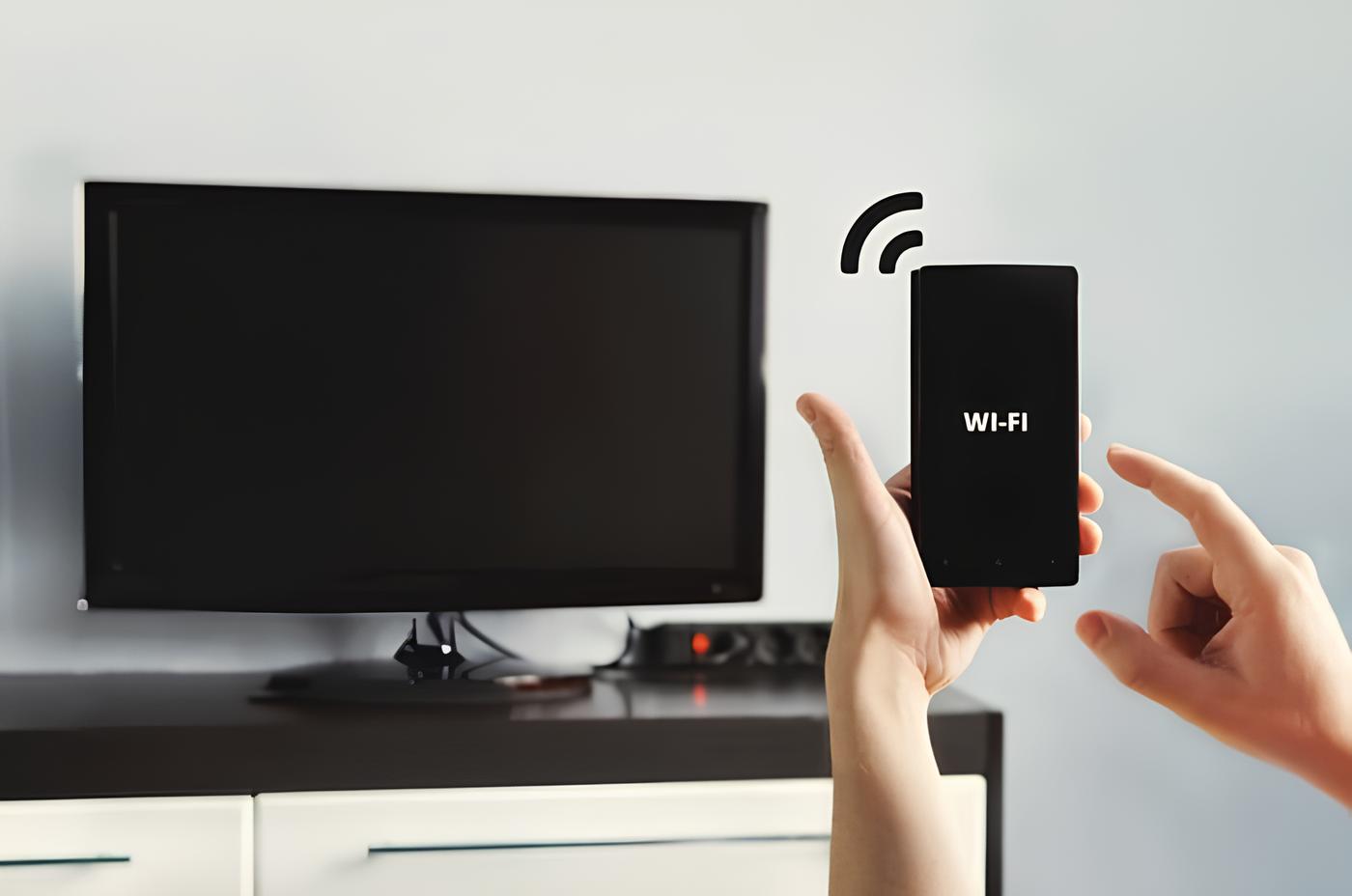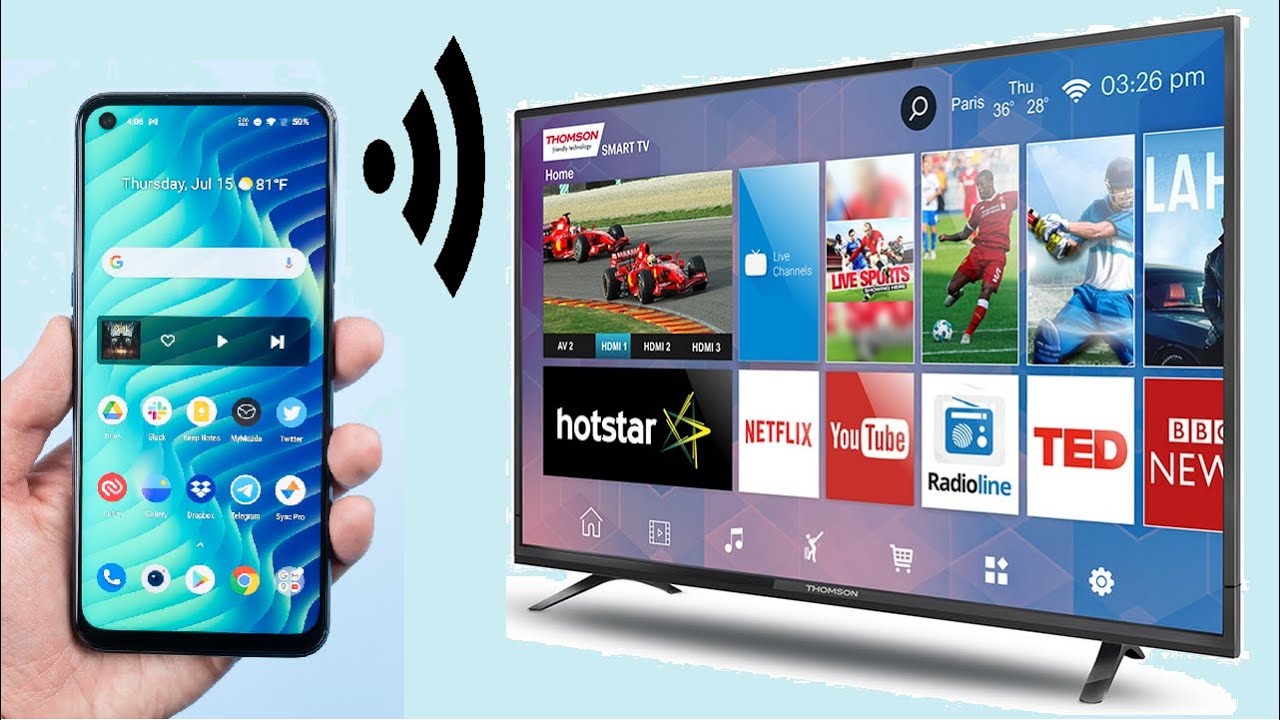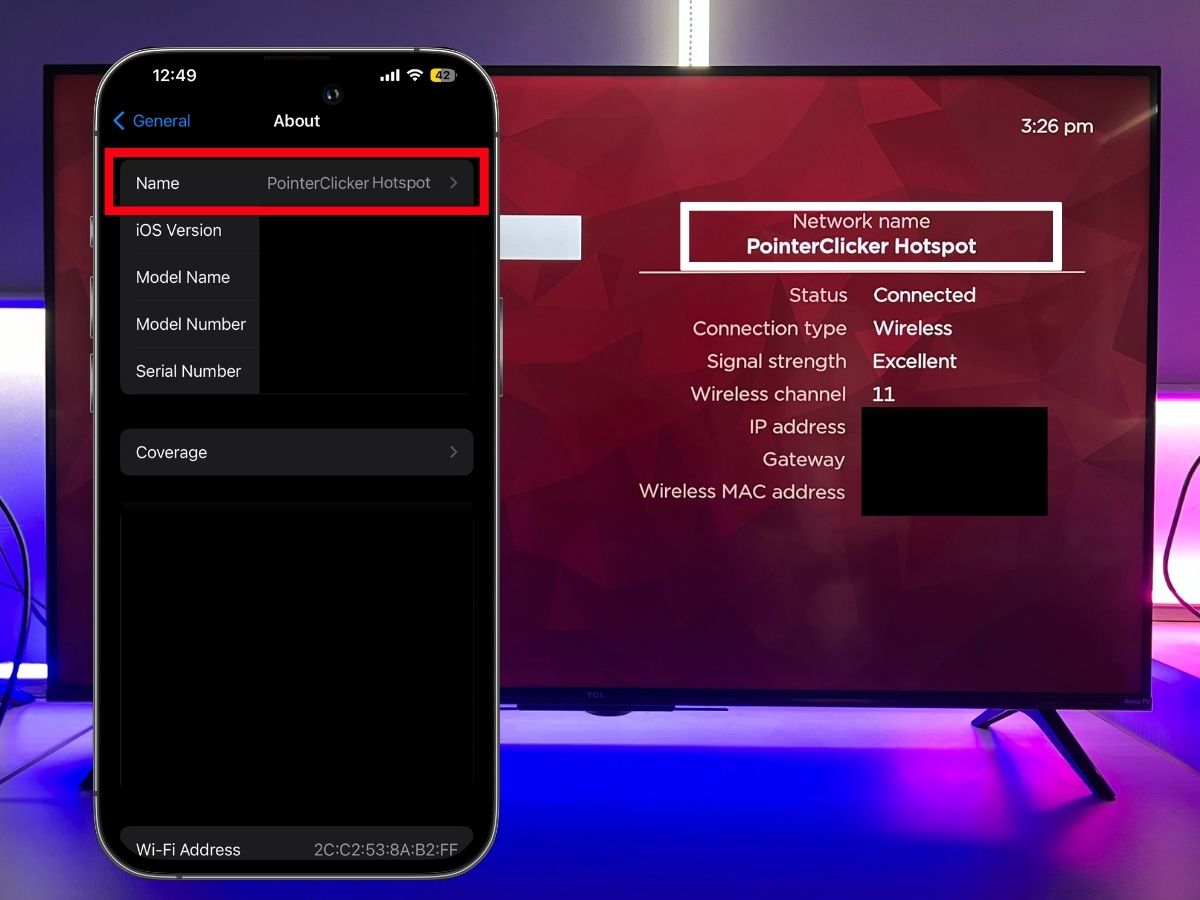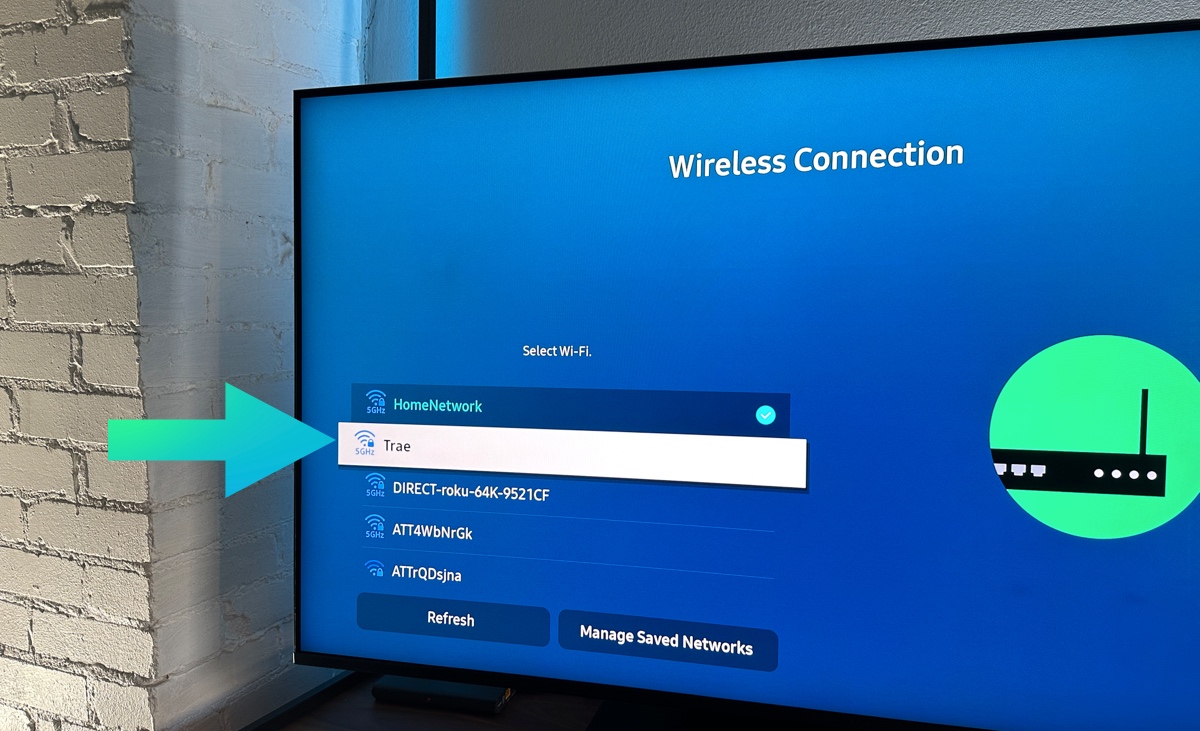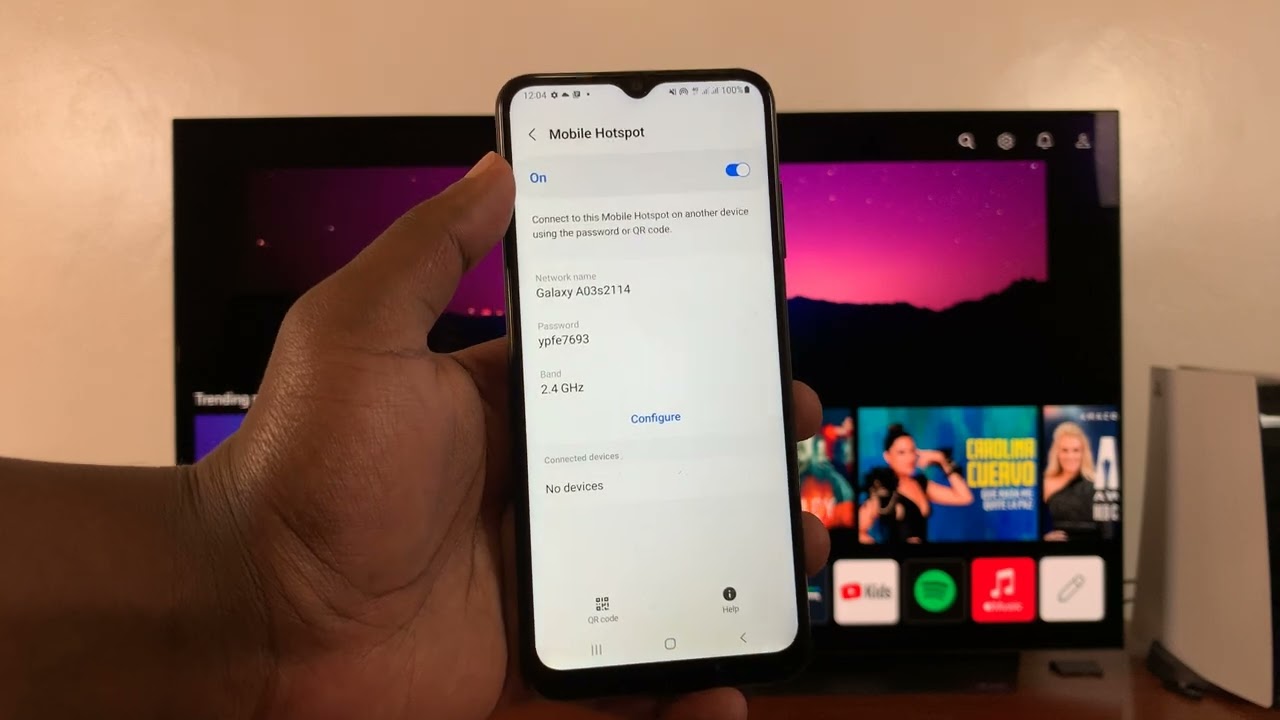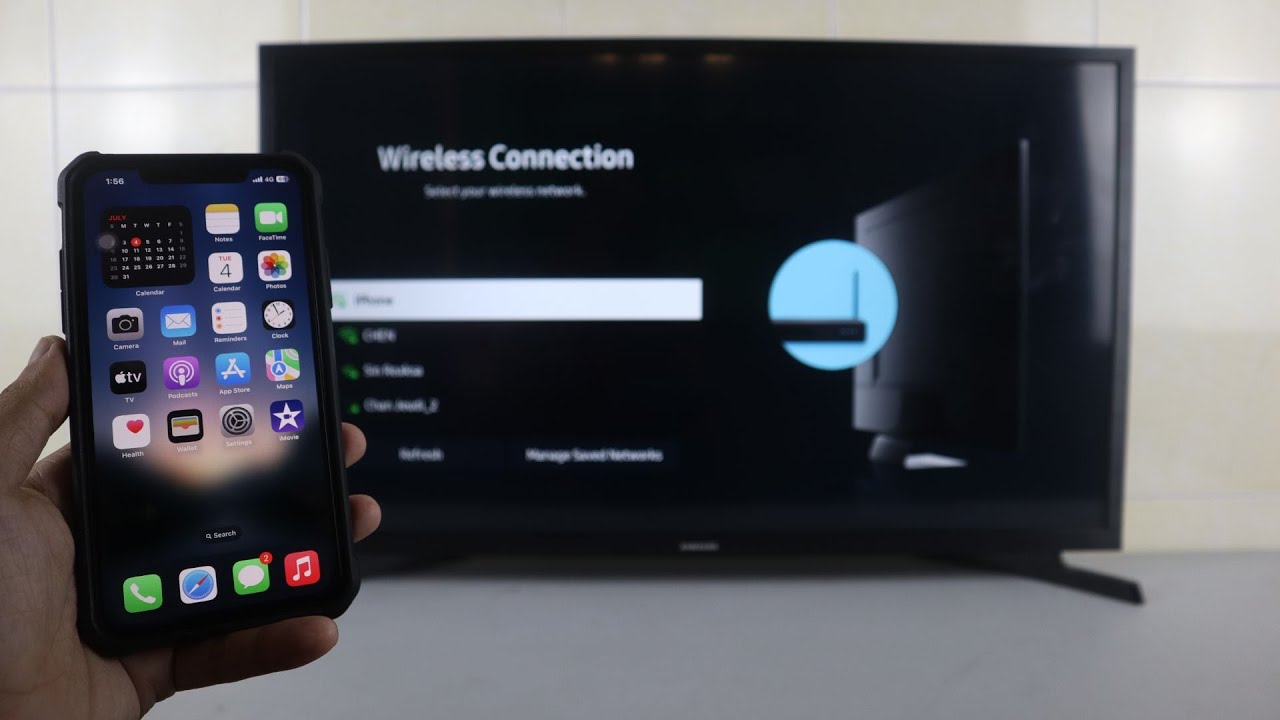Introduction
Welcome to our guide on how to connect a Smart TV to a mobile hotspot. With the rising popularity of streaming services and online entertainment, having a reliable internet connection for your Smart TV is essential. However, there may be situations where accessing a Wi-Fi network is not feasible, such as when you’re traveling or don’t have access to a home network. In such cases, using your mobile hotspot can be a convenient solution.
A mobile hotspot allows you to share your smartphone’s internet connection with other devices, including your Smart TV. This enables you to enjoy all the features and content available on your Smart TV, even without a dedicated Wi-Fi network. Whether you’re looking to stream your favorite shows and movies, play online games, or browse the internet, connecting your Smart TV to a mobile hotspot is a practical option.
In this guide, we will walk you through the step-by-step process of connecting your Smart TV to a mobile hotspot. We will provide detailed instructions and tips to ensure a smooth and successful connection. So, whether you’re using an Android or iOS device, and whether you have a Samsung, LG, Sony, or any other brand of Smart TV, you’ve come to the right place.
Before we delve into the steps, there are a few things to keep in mind. Firstly, using a mobile hotspot may consume a significant amount of data, so it’s important to be mindful of your data plan. Additionally, the availability of certain features or apps on your Smart TV may depend on the strength and stability of the mobile hotspot connection.
Without further ado, let’s get started with Step 1: Checking your mobile hotspot settings.
Step 1: Check your mobile hotspot settings
Before you can connect your Smart TV to your mobile hotspot, it’s important to ensure that your hotspot settings are properly configured. Here’s how to check your settings:
- Open the settings menu on your smartphone. The process may vary slightly depending on your device’s operating system.
- Look for the “Hotspot” or “Mobile hotspot” option. Tap on it to access the settings.
- Check that the hotspot feature is turned on. If it’s not, toggle the switch to enable it.
- Take note of the network name (SSID) and password of your mobile hotspot. You’ll need these later to connect your Smart TV.
- Consider adjusting other hotspot settings, such as the network band or security settings, if necessary.
It’s worth mentioning that some smartphones and mobile carriers may have additional settings or restrictions for their mobile hotspot feature. For example, you may need to enable “tethering” or have a specific data plan that allows hotspot usage. Checking with your mobile carrier or referring to your smartphone’s user manual can provide further guidance on these settings.
Once you’ve confirmed and adjusted the necessary settings, you’re ready to proceed to the next step: turning on the mobile hotspot on your smartphone.
Step 2: Turn on the mobile hotspot on your smartphone
Now that you have confirmed and adjusted the settings of your mobile hotspot, it’s time to turn it on. Follow these steps to enable the hotspot feature on your smartphone:
- Open the settings menu on your smartphone. Look for the “Hotspot” or “Mobile hotspot” option.
- Tap on the hotspot option to access the settings and enable the feature.
- You may have the option to customize your hotspot settings, such as choosing the network name (SSID) or password. Customize these settings if desired, or you can leave them as the default settings.
- Make sure your mobile data or cellular network is turned on. The mobile hotspot uses your phone’s data connection to provide internet access to other devices.
- Once you’ve enabled the mobile hotspot, it should appear as an available Wi-Fi network on your Smart TV.
It’s important to note that some smartphones and mobile carriers may require you to activate the hotspot feature through their specific apps or settings menus. If you’re having trouble finding the hotspot option, consult your smartphone’s user manual or contact your mobile carrier for guidance.
Another consideration is the battery life of your smartphone. Using the mobile hotspot can drain your phone’s battery more quickly, especially if you’re connecting multiple devices or using data-intensive applications on your Smart TV. Keep your phone plugged in or have a charger nearby to ensure uninterrupted usage.
With the mobile hotspot turned on and properly configured, you’re ready to move on to the next step: connecting your Smart TV to the mobile hotspot.
Step 3: Connect your Smart TV to the mobile hotspot
Now that your mobile hotspot is enabled and your smartphone is ready to share its internet connection, it’s time to connect your Smart TV. Follow these steps to establish a connection:
- Turn on your Smart TV and navigate to the network settings menu. The exact location of the network settings may vary depending on your TV’s brand and model.
- In the network settings menu, look for the option to connect to a Wi-Fi network. Select this option to view available networks.
- Your mobile hotspot should appear in the list of available networks. Select your hotspot’s network name (SSID) to connect to it.
- If prompted, enter the password for your mobile hotspot. Ensure that you enter the correct password to establish a successful connection.
- Wait for your Smart TV to establish a connection with the mobile hotspot. This may take a few moments.
Once your Smart TV successfully connects to the mobile hotspot, you should see a confirmation message or an indication of the active network connection. This means that your Smart TV is now using the internet connection provided by your smartphone’s mobile hotspot.
It’s worth mentioning that the process of connecting to a Wi-Fi network on a Smart TV may vary slightly depending on the TV’s brand and model. Some TVs may have a dedicated “Mobile hotspot” option in the network settings menu, simplifying the process even further. Refer to your Smart TV’s user manual for specific instructions if needed.
Congratulations! You have successfully connected your Smart TV to the mobile hotspot. However, there are a few additional network settings that you may need to configure on your TV to optimize the connection. In the next step, we will walk you through the process of configuring network settings on your Smart TV.
Step 4: Configure network settings on your Smart TV
After connecting your Smart TV to the mobile hotspot, it’s important to configure the network settings to ensure a stable and optimal connection. Follow these steps to customize the network settings on your Smart TV:
- Access the network settings menu on your Smart TV. This can usually be done through the TV’s settings or setup options.
- Look for the “Network Settings” or “Wireless Settings” option and select it to access the network configuration options.
- Check if the network is set to “Automatic” or “Manual”. It’s usually recommended to set it to “Automatic” so that your Smart TV can automatically connect to the mobile hotspot whenever it’s available.
- If available, you can also adjust the network frequency or channel settings. Choosing the optimal settings can help improve the stability and speed of your connection.
- Some Smart TVs may have an option to prioritize Wi-Fi networks. If this option is available, ensure that your mobile hotspot is set as the top priority network.
- Save the changes you made to the network settings and exit the menu. Your Smart TV will now apply the new network configuration.
It’s worth noting that the network settings and options on your Smart TV may vary depending on the brand and model. Some TVs may have advanced features, such as Wi-Fi signal amplification or network diagnostics tools. Consult your Smart TV’s user manual for specific instructions related to your device’s network settings.
With the network settings properly configured, you can now enjoy seamless streaming, gaming, and internet browsing on your Smart TV using the mobile hotspot. However, it’s important to be aware of common issues that may arise and how to troubleshoot them. In the next step, we will discuss some troubleshooting tips for common hotspot connection problems.
Step 5: Troubleshooting common issues
While connecting your Smart TV to a mobile hotspot is relatively straightforward, there might be instances where you encounter connectivity issues or face challenges during the process. Here are some common issues that may arise and troubleshooting tips to help you resolve them:
- No Wi-Fi signal on the Smart TV: Ensure that the mobile hotspot is turned on and within range of the Smart TV. Check if other devices can connect to the hotspot to verify its availability.
- Weak or unstable connection: Position your Smart TV and smartphone closer to each other to improve signal strength. Reduce interference from other devices or nearby wireless networks by changing the Wi-Fi channel on your smartphone or adjusting the location of your Smart TV.
- Incorrect network credentials: Double-check that you entered the correct password for the mobile hotspot when connecting your Smart TV. If you’re unsure, you can change the hotspot password on your smartphone and update it in the TV’s network settings.
- Exceeded data limits: Keep an eye on your data usage to ensure you don’t exceed your mobile plan’s limits. Streaming high-definition content or downloading large files can quickly consume data. Consider lowering the video quality on streaming apps or connecting to public Wi-Fi networks when available.
- Unresponsive hotspot feature: If your smartphone’s hotspot feature is not working or causing issues, try restarting your device. If the problem persists, contact your mobile carrier for assistance or consider updating your smartphone’s software.
If you have followed the troubleshooting tips above and are still experiencing connectivity issues, you may want to reach out to your smartphone’s manufacturer or your Smart TV’s customer support for further assistance. They can provide specific guidance based on the devices you’re using and help resolve any compatibility or technical issues.
By troubleshooting and resolving these common issues, you can ensure a reliable and consistent connection between your Smart TV and the mobile hotspot, allowing you to enjoy your favorite content without interruptions.
Conclusion
In today’s connected world, having a reliable internet connection for your Smart TV is essential for enjoying a wide range of entertainment options. By following the steps outlined in this guide, you can easily connect your Smart TV to a mobile hotspot and enjoy streaming, gaming, and internet browsing, even when a Wi-Fi network is not available.
We started by checking and configuring the mobile hotspot settings on your smartphone, ensuring that the hotspot feature is enabled and the network name (SSID) and password are readily available. From there, we turned on the mobile hotspot and connected your Smart TV to this network, ensuring a seamless connection.
We then covered the importance of configuring the network settings on your Smart TV to optimize the connection and improve stability. By adjusting settings such as network mode and frequency, you can enjoy a smoother experience when using your Smart TV with the mobile hotspot.
Lastly, we discussed common issues that you may encounter when connecting your Smart TV to a mobile hotspot and provided troubleshooting tips to help you resolve them. By following these tips, you can overcome connectivity issues and enjoy uninterrupted streaming and browsing on your Smart TV.
Remember to be mindful of your data usage while using a mobile hotspot, as it can quickly consume your data plan. Keep track of your data limits and adjust your usage accordingly to prevent any unexpected charges.
We hope that this guide has been helpful in assisting you to connect your Smart TV to a mobile hotspot. With a stable internet connection, you can unlock the full potential of your Smart TV and enjoy a wide range of entertainment options anytime and anywhere.







